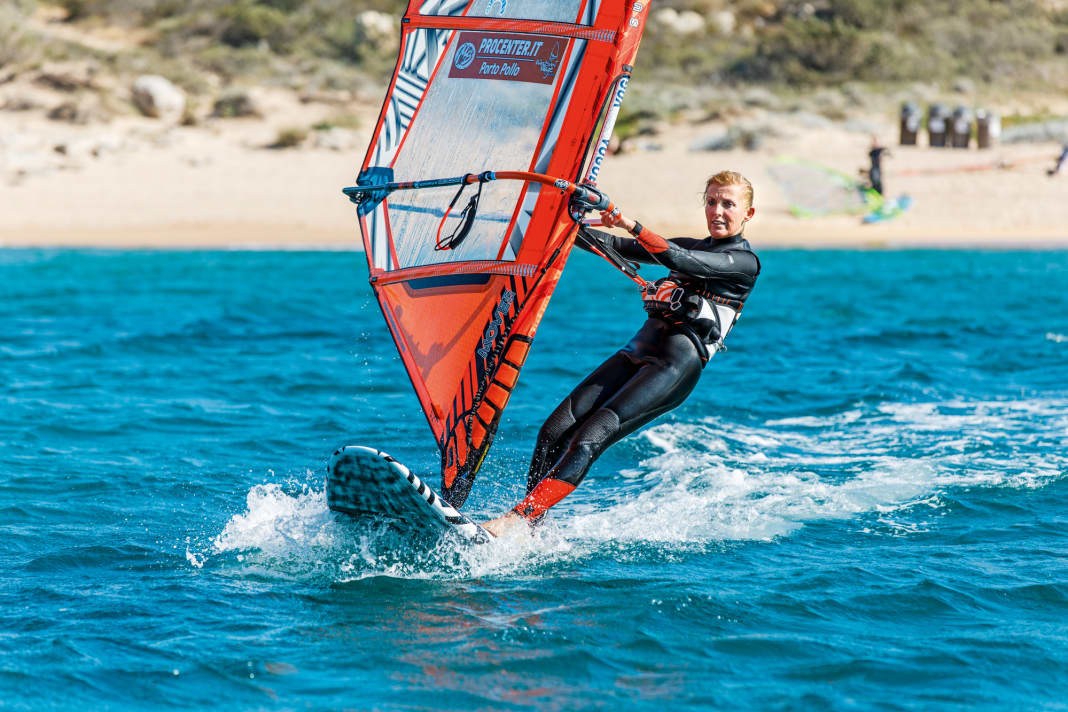





Trapeze surfing - what is it?
Harness surfing is the key to being able to surf with less effort in stronger winds. A harness consists of a waist strap with a hook. You use this to hook into the harness lines attached to the boom, allowing you to hold the sail with your body weight and take the strain off your arms. The correct settings and a few safety tips are important. The quickest way to learn everything is to take a harness course at your VDWS surf school.
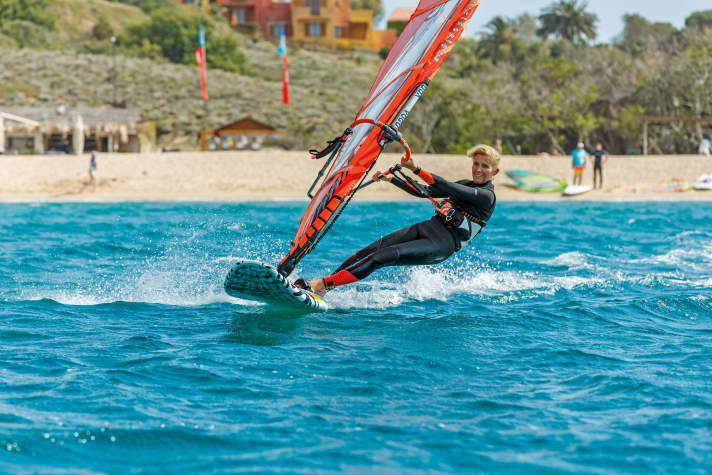
Seat harness or waist harness - which is better?
Seat harnesses have leg straps and a slightly lower hook position. You "sit" a little more, which takes the strain off your back during long surf sessions. However, waist harnesses are better suited to beginners, as the higher hook position makes it easier to hook in and out and you have more freedom of movement due to the lack of leg straps. Which system you use as an experienced windsurfer is a matter of taste and not a question of right or wrong.



Trapeze surfing - rope position and length:
The position of the ropes must be correct so that both arms are equally relieved on the water. You can easily adjust this on land. Set your sail into the wind on the beach, pull up fully and hang into the sail. The centre of effort, the centre of gravity of your sail so to speak, is then exactly between your hands. This should also be the centre of the harness lines. With the correct setting, your arms will be evenly relieved. To begin with, it is ideal if the two Velcro fasteners of the ropes are one or two hand-widths apart.
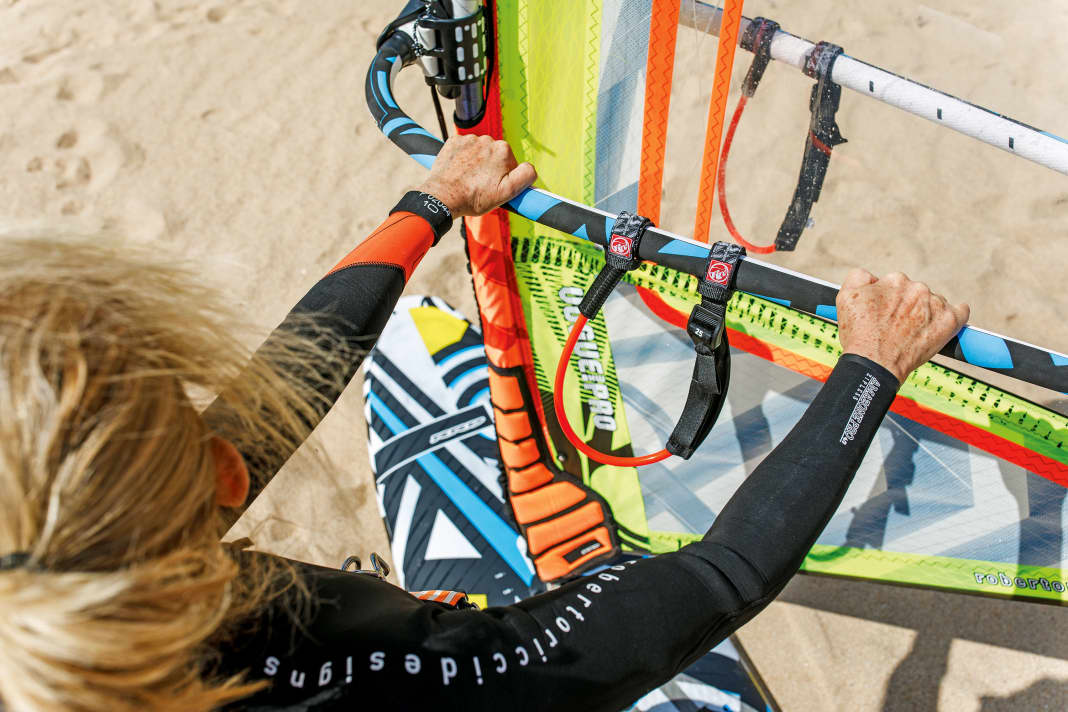


It is best to use vario harness lines with an adjustment range between 22 and 30 inches. A rough guide to the right length is the forearm check: if the ropes reach from the wrist to the elbow, the length usually fits well!
Trapeze surfing - the perfect stance
We have clearly compared the ideal position and the typical incorrect position for trapeze surfing here:
The typical mistake:
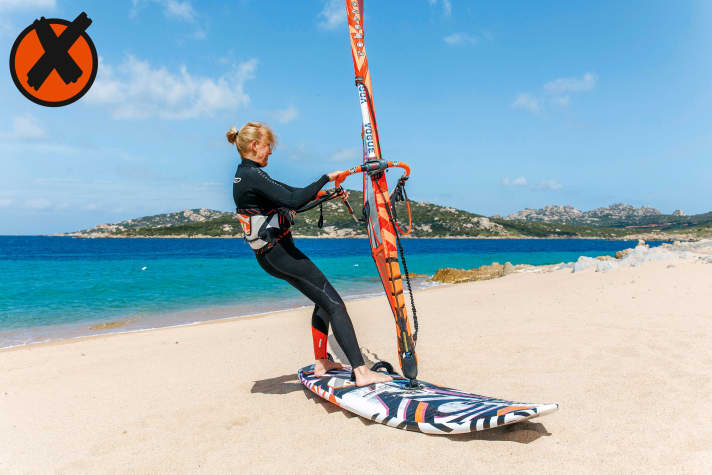
If the boom is set too low and the harness lines too short, as in the error picture, the power is transmitted to the board more crossways than forwards. If the front foot and shoulders are also turned to leeward, i.e. across the direction of travel, the propulsion is completely stifled.
It works better with the following tips:
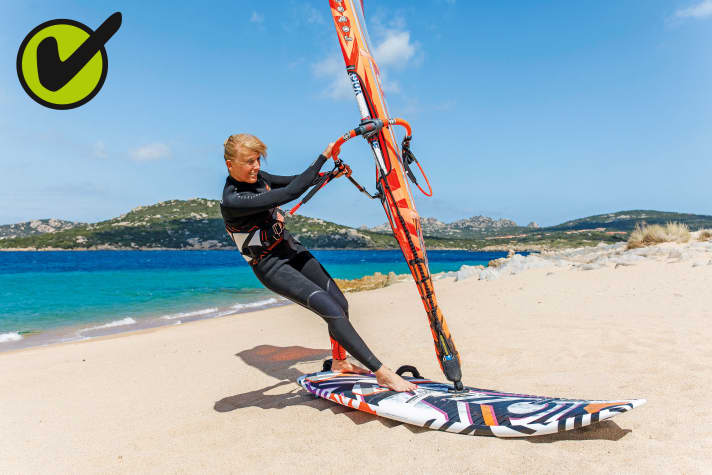
Do not adjust the boom below shoulder height and adjust the harness lines so that they end just above your harness hook when you are standing on the board with the sail close-hauled. When hooked in, you should be able to stretch your arms out completely. Turn your front foot and shoulders on the board in the direction of travel (see picture above), the power is now transferred forwards - the result is earlier planing.
Hooking and unhooking
Before you hook in, first get really tight on a half-wind course (course across the wind). Your harness lines should end just above the harness hook so that you can hook and unhook easily.

To hook in, pull the boom towards you and push your hips forwards. Your centre of gravity must remain behind so that you are not pulled downwind over the board. Therefore, keep your shoulders back and only push your hips forwards.
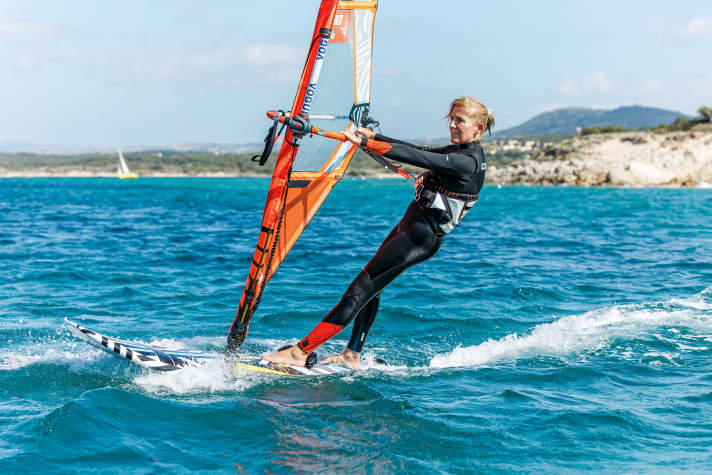
Slowly shift the sail pull into the harness and relax your arms. Before manoeuvres or large steering movements, you must unhook yourself: pull the boom in, push your hips forward and keep your shoulders back - this will cause the harness line to automatically fall out of the hook.
Sheet out and sheet in
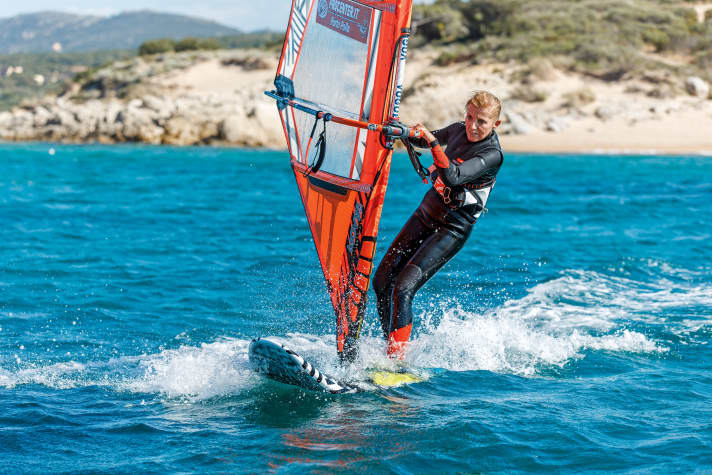
When hooked into the harness, you cannot simply open the sail with your back hand as usual to release the pressure in an emergency. To avoid being pulled forwards into the water in gusts, you can pull the mast towards your body with your front hand and turn your shoulders forwards. This will also turn the sail (sheet out) and release the pressure.
Falling in the trapeze
Anyone learning to ride a harness initially feels like a dog on a lead. Falls are inevitable, especially in gusty winds. A classic is the fall to leeward, which happens when you overlook a gust and can't open the sail in time. If you are pulled forwards, keep your feet on the board and your hands on the boom (you can't get away anyway!). Now it's time to keep your body tension and absorb the impact in a push-up position. If you sag like a wet sack, you run the risk of damaging the sail with your knee or the harness hook.
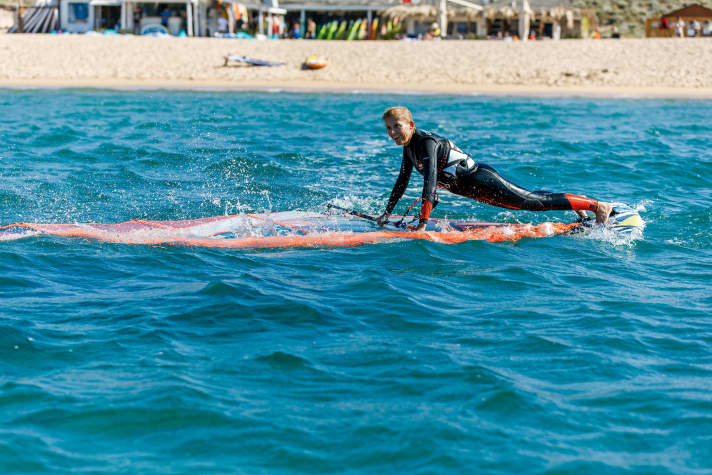
The opposite is true when falling to windward, which happens when you have just laid back fully and the wind suddenly drops. The fear of being hooked under the sail is unfounded, as you automatically pull your arms up when falling behind and almost always unhook yourself. But even when hooked in, the harness lines are always long enough for you to come up with your head in front of the mast and catch your breath.
Trapeze surfing - the video tutorials
Tips on keystone settings and keystone selection can be found here:
We will explain how to hook in and out and how to control the trapeze in Part 2:
How you can even glide with the right trapeze technique? Find out here:

